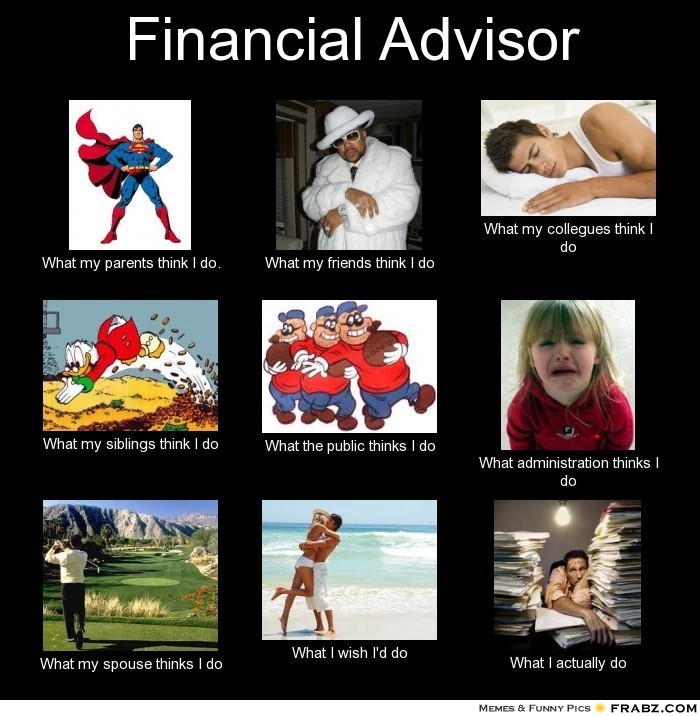Note to self: Must take charge of my own brand





by Tony Vidler ![]()
![]()
![]()
 I listened to a good friend, who is also a client and a good centre of influence and an advocate, explain what I do to someone else. End result: I must take charge of my own brand, because this experience provided a shining example of why some prospects see us the way they do.
I listened to a good friend, who is also a client and a good centre of influence and an advocate, explain what I do to someone else. End result: I must take charge of my own brand, because this experience provided a shining example of why some prospects see us the way they do.
When my client & friend tried to explain to someone else what I do for a living as a way of positioning me positively it highlighted what a poor job I had done of explaining to him how I wanted to be seen. I flatter myself perhaps, but I think I am generally better than most in articulating what I do, in terms of benefits for customers, and doing it in plain language that anyone can understand….or so I thought.
His explanation (not quite verbatim) was essentially: “he’s a financial planner and insurance broker and a consultant. He helps you hide money from yourself really you so can’t spend it all…and can help your business do that too“.
I am sitting on the other side of the table listening and thinking “WTF? I don’t hide people’s money…in fact that’s illegal isn’t it?“
My friend was putting his own interpretation into it of course; it was I suppose how he perceives that I have helped him most. His perception of the benefits of having me as his adviser, together with his own choice of language, and enthusiastic pitch on my behalf all combined to transform my role and message into something which would probably get me into trouble with the authorities.
It reminds me of a legendary story going back to World War 1 of an English officer who realised that the enemy had withdrawn slightly in his sector presented him with an opportunity to attack relatively easily to exploit the error. He sent a runner back to HQ with a verbal message: “Send reinforcements, we are going to advance“.
The runner left with the instructions ringing in his head, and passed it verbally onto another person, who in turn carried the message onto another, and so on. Some 6 runners were involved apparently in relaying the message from the front lines and carrying this simple verbal request back to HQ which was about 5 miles from the front lines.
The message that actually ended up being delivered verbally to GHQ was: “Send three and fourpence, we are going to a dance“. Somehow the “send reinforcements we are going to advance” morphed into something utterly ridiculous.
Baffled, they did nothing other than send runners back to find out what this cryptic message meant….and the opportunity was lost.
Each tired messenger, facing their own perils and physical hardships, passed on a huffing and puffing hasty message – with a slight variation. Each new runner listened and heard the message their own way. In relatively short order the message was completely altered to meaningless nonsense.
So it is with so many of our own marketing efforts, and coaching of clients. We explain what we do to them. We actually do what we do for them, and they get to experience what it is we do. When they try to articulate their experience and beliefs of what we do however our message gets changed. IF they were impressed enough with us to convince their friends that we are worth talking to, and their friends in turn talk to others, the message about what we do and how we do it changes yet again. And again.
Then we wonder why the prospects do not understand what we can do for them. We wonder why there is a world of people out there with wildly differing views of what we do…perhaps best captured via meme:

This experience of witnessing first hand how prospective customers come to see us the way they do despite the enthusiastic advocacy from a very happy client highlighted the necessity for me of creating written collateral (digital and physical) that succinctly says what we really do. Next, making sure that the collateral where we control the message is the messsaging material that our advocates use.
For our COI’s and advocates we also need to subtly coach them to use the words we want used – that we know will actually send the message that we want the market to hear – and give them the collateral we want used. We cannot leave it to chance. Even if that collateral is something as basic as a business card that has your core value propositioin boldy pronounced on one side – make sure they use that when advocating for you.
If we want to control how prospects perceive us, and what it is we believe we can do for them, we need to manage our brand and make sure that wherever possible our advocates are using our branded collateral (whatever format or style that is) that does tell the world what we do. In our well-chosen words.
Comments (1)